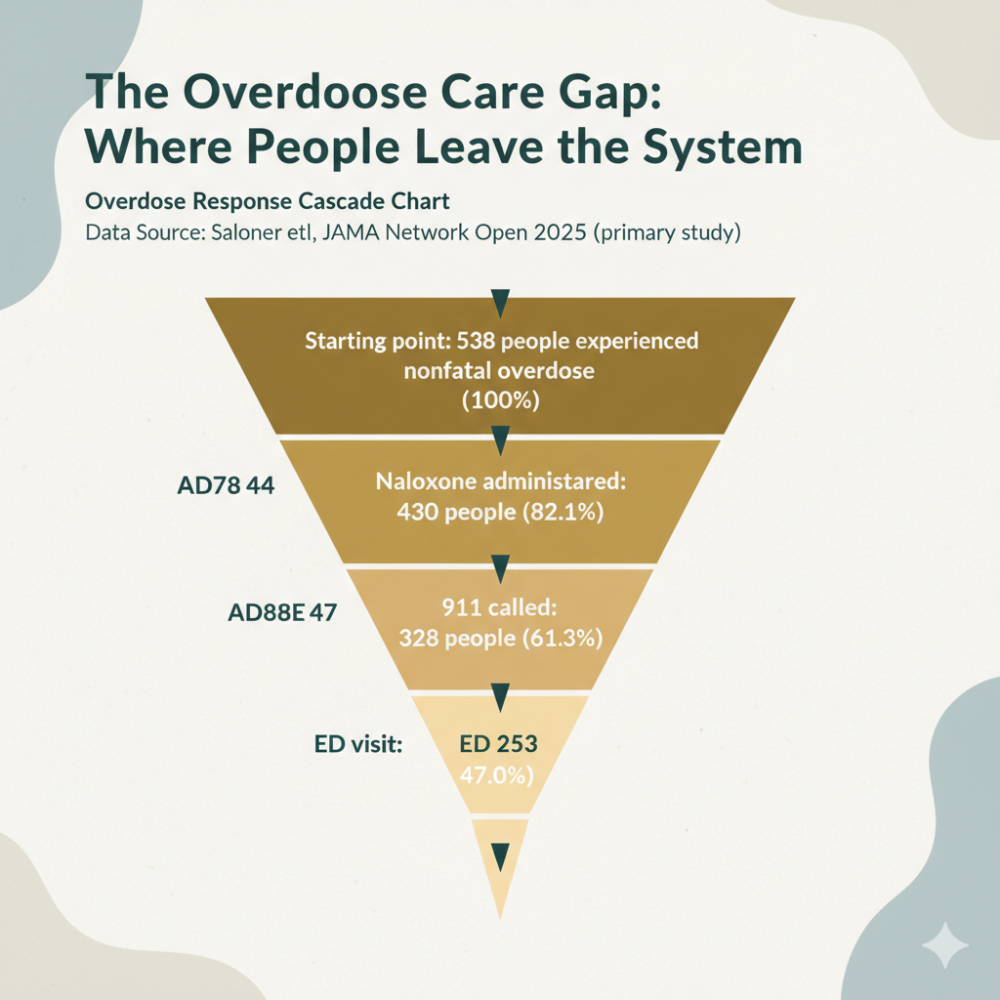A powerful movement is taking place across social media platforms, particularly TikTok and Reddit, as thousands of users share their unexpected struggles with kratom addiction. What many believed to be a safe, natural wellness supplement has become a source of intense physical dependence and withdrawal symptoms that rival those of traditional opioids.
This surge in personal testimonies is shedding new light on the addictive potential of kratom products, particularly the small energy shot-sized beverages commonly sold in gas stations, convenience stores, and kava bars across the country.
The Social Media Awakening
TikTok and the Power of Shared Experience
Social media platforms have become unexpected sources of education about kratom’s addictive potential. On TikTok, users are courageously sharing their personal experiences with kratom addiction, describing how a substance they purchased casually became a significant problem in their lives.
These firsthand accounts are particularly powerful because they come from real people sharing unfiltered experiences, not from marketing materials or product advertisements. Users describe:
– Immediate attraction: Feeling euphoria, increased energy, and mood enhancement after first use
– Rapid escalation: Needing to use kratom more frequently and in higher doses
– Unexpected dependence: Realizing they couldn’t function normally without the substance
– Severe withdrawal: Experiencing intense physical and psychological symptoms when trying to quit
The r/QuittingKratom Community
Reddit’s r/QuittingKratom forum has grown to over 50,000 members, representing one of the largest online communities dedicated to kratom cessation. Daily posts in this forum reveal the widespread nature of kratom addiction and include:
– Personal testimonies: Users sharing stories with titles like “Kratom ruined my life”
– Withdrawal documentation: Detailed accounts of detox experiences lasting days or weeks
– Comparison experiences: Users comparing kratom withdrawal to opiate detox
– Support and encouragement: Community members helping each other through recovery
This community represents a significant shift in public understanding of kratom’s effects, moving beyond marketing claims to real-world experiences.
Understanding Some Versions of Kratom’s Deceptive Marketing
The “Natural” and “Safe” Misconception
Much of kratom’s appeal stems from marketing that emphasizes its natural origins and safety profile. Common marketing claims include:
– “All-natural botanical supplement”: Emphasizing plant-based origins
– “Safe alternative to pharmaceuticals”: Suggesting it’s safer than prescription medications
– “Mood and energy booster”: Promoting wellness and productivity benefits
– “Non-addictive herbal remedy”: Downplaying addiction potential
However, these claims can be misleading. As one user shared: “I took it from a kava bar thinking it was honestly kind of like a wellness supplement or something that was healthy for me.”
The Reality Behind the Marketing
The disconnect between marketing and reality becomes clear when examining user experiences:
– Immediate euphoria: Users report feeling “blissfulness” and “euphoria” within minutes
– Energy and mood enhancement: Effects that can feel like the “answer to all problems”
– Rapid tolerance development: Needing increasing amounts to achieve the same effects
– Physical dependence: Body adaptation that makes stopping extremely difficult
The Science of Kratom Addiction
How Kratom Affects the Brain
Kratom contains compounds that interact with opioid receptors in the brain, particularly:
– Mitragynine: The primary active alkaloid in kratom leaves
– 7-hydroxymitragynine (7-OH): A more potent metabolite that acts similarly to opioids
– Multiple alkaloids: Over 40 different compounds that can affect brain chemistry
These compounds bind to the same receptors targeted by prescription opioids and illegal drugs like heroin, explaining why kratom can produce both euphoric effects and withdrawal symptoms.
Understanding the Kratom to 7-OH Escalation: A Parallel to Morphine and Fentanyl
To understand the danger of concentrated 7-OH products, it’s helpful to compare the relationship between kratom and 7-OH to the well-known progression from morphine to fentanyl in the opioid crisis.
The Morphine to Fentanyl Progression
Morphine was once considered the gold standard for pain management:
– Derived from natural opium poppies
– Predictable effects and dosing
– Well-understood medical applications
– While addictive, overdose risks were more manageable
Fentanyl represents a dramatic escalation in potency and danger:
– Synthetic opioid that’s 50-100 times more potent than morphine
– Extremely small amounts can cause fatal overdoses
– Rapid onset of effects making overdose more likely
– Difficult to reverse overdoses, often requiring multiple doses of naloxone
– Has driven the majority of recent overdose deaths in America
The Kratom to 7-OH Parallel
This same pattern of escalation is occurring with kratom products:
Traditional Kratom (like morphine):
– Natural plant product with multiple compounds
– Effects are generally milder and more predictable
– While potentially addictive, overdose risk is typically lower
– Users can often gauge their tolerance and dosing
Concentrated 7-OH (like fentanyl):
– Isolated, concentrated compound that’s significantly more potent
– Small amounts can produce intense effects and potential overdose
– Rapid onset makes it harder to control dosing
– Much higher addiction potential and more severe withdrawal symptoms
– Often mislabeled or mixed into products without clear indication of strength
Why This Escalation Matters
The progression from kratom to 7-OH products mirrors the deadly shift that occurred in the opioid crisis:
Unpredictable Potency
Just as fentanyl contamination made street drugs unpredictably dangerous, 7-OH products vary widely in concentration. A user accustomed to regular kratom may unknowingly consume a 7-OH product and experience:
– Unexpected intensity of effects
– Rapid development of tolerance
– More severe withdrawal symptoms
– Higher risk of overdose
Marketing Confusion
Like how fentanyl is often sold as heroin or mixed into other drugs, 7-OH products are frequently marketed as:
– “Enhanced kratom”
– “Kratom extracts”
– “Natural energy supplements”
– Products with kratom-like labeling but concentrated synthetic content
This misleading marketing means users think they’re getting a familiar product when they’re actually consuming something far more potent and dangerous.
Escalating Crisis Pattern
The opioid epidemic showed how quickly a crisis can escalate when synthetic, concentrated substances replace natural ones:
– Prescription opioids led to increased tolerance and addiction
– Heroin became the cheaper alternative when prescriptions were restricted
– Fentanyl contamination made every use potentially fatal
We’re seeing early signs of a similar pattern with kratom:
– Regular kratom creates initial tolerance and dependence
– 7-OH products offer more intense effects for tolerant users
– Concentrated synthetic versions pose overdose risks users don’t expect
The Critical Difference: Intervention Opportunity
Unlike the opioid crisis, which caught the medical and regulatory communities largely unprepared, we have the opportunity to intervene in the kratom-to-7-OH progression early.
However, this requires:
– Public awareness about the difference between kratom and 7-OH
– Treatment availability for those already struggling with kratom dependence
– Education about the escalation risks for current kratom users
The Addiction Process
Kratom addiction follows patterns similar to other substance use disorders:
1. Initial positive effects: Users experience mood enhancement, energy, and euphoria
2. Tolerance development: The same dose becomes less effective over time
3. Increased consumption: Users take larger amounts or more frequent doses
4. Physical dependence: The body adapts to expect regular kratom use
5. Withdrawal symptoms: Stopping use results in uncomfortable physical and psychological effects
Real Withdrawal Experiences
Physical Symptoms
Users sharing their experiences on social media describe intense physical withdrawal symptoms:
– Sleep disturbances: “I couldn’t sleep at night” – complete insomnia for days
– Night sweats: “I was sweating through my bed sheets” – profuse sweating
– Restless leg syndrome: “My restless legs were so bad” – requiring multiple baths for relief
– Muscle aches and pains: Body-wide discomfort and cramping
– Nausea and digestive issues: Stomach problems and loss of appetite
– Temperature regulation problems: Alternating between hot and cold sensations
Psychological Symptoms
The mental and emotional aspects of kratom withdrawal can be equally challenging:
– Severe depression: Overwhelming sadness and hopelessness
– Anxiety and panic: Intense worry and fear responses
– Irritability and mood swings: Difficulty managing emotions
– Cognitive fog: Problems with concentration and memory
– Cravings: Strong urges to use kratom again
– Anhedonia: Inability to feel pleasure in normal activities
Duration and Intensity
Emily Beutler, who founded the brand “QuitK”, described her experience: “The next 3 to 5 days was the worst I’d ever felt in my life.” However, many users report that while acute symptoms may last several days, lingering effects can persist for weeks or months.
The Role of Professional Treatment
Why Professional Help Matters
The intensity of kratom withdrawal symptoms described on social media highlights the importance of professional medical support during the cessation process. Professional treatment offers:
– Medical supervision: Monitoring vital signs and managing complications
– Symptom management: Medications to ease withdrawal discomfort
– Safety protocols: Preventing medical emergencies during detox
– Psychological support: Addressing the mental health aspects of withdrawal
– Relapse prevention: Developing strategies for long-term recovery
Treatment Approaches for Kratom Addiction
Medical Detoxification
– Gradual tapering: Slowly reducing kratom doses under medical supervision
– Comfort medications: Using FDA-approved medications to manage withdrawal symptoms
– Nutritional support: Addressing deficiencies that may complicate recovery
– Sleep management: Helping restore normal sleep patterns
Gallus Detox and Recovery has inpatient medical detox available in Denver Colorado, Phoenix / Scottsdale Arizona, and Dallas Texas. We have experience and modern protocols for helping people quit kratom with medical assistance.
Behavioral Therapies
– Cognitive-behavioral therapy: Identifying and changing thought patterns that support kratom use
– Motivational interviewing: Helping individuals find their own reasons for change
– Relapse prevention planning: Developing strategies to maintain sobriety
– Support group participation: Connecting with others in recovery
Integrated Care
– Mental health treatment: Addressing underlying depression, anxiety, or trauma
– Medical care: Treating any health issues related to kratom use
– Social support: Involving family and friends in the recovery process
– Lifestyle changes: Developing healthy routines and coping mechanisms
For Behavioral Therapies, training for lifestyle changes, and more; Gallus Intensive Outpatient has in person meetings and learn via live video chat options in Colorado, Arizona, and Texas.
Warning Signs and When to Seek Help
Recognizing Kratom Addiction
Signs that kratom use has become problematic include:
– Inability to function without kratom: Needing the substance to feel normal
– Increasing tolerance: Requiring larger or more frequent doses
– Failed quit attempts: Trying to stop but being unable to do so
– Continued use despite problems: Using kratom even when it causes issues
– Withdrawal symptoms: Experiencing physical or psychological discomfort when not using
– Neglecting responsibilities: Prioritizing kratom use over work, family, or health
The Importance of Early Intervention
As Certified Addiction Counselor Nick Nacchia emphasizes, “One of the most important things when battling substance abuse is being proactive, opening up to conversations with those around you and researching what things you may not be sure about before consuming.”
Early intervention can prevent kratom use from escalating into severe addiction and can make the recovery process easier and safer.
Prevention and Education
For Individuals Considering Kratom
Before trying kratom products:
– Research thoroughly: Look beyond marketing claims to find scientific information
– Consult healthcare providers: Discuss potential risks with medical professionals
– Consider alternatives: Explore evidence-based treatments for pain, anxiety, or energy issues
– Understand the risks: Recognize that “natural” doesn’t mean “safe” or “non-addictive”
For Families and Communities
– Open communication: Talk to family members, especially young adults, about kratom risks
– Behavioral awareness: Watch for changes in mood, energy, or daily routines
– Education: Share accurate information about kratom’s addiction potential
– Support: Be prepared to help loved ones seek professional treatment if needed
The Regulatory Landscape
Current Legal Status
Kratom exists in a regulatory gray area:
(and Kratom products such as concentrates may be regulated differently from the basic plant material. There have been several law changes and new laws being debated in many states and at the federal level as of August 2025)
– Age restrictions: Must be 21 or older to purchase in many areas
– State variations: Some states have banned kratom or kratom derivatives, while others allow it
– Federal consideration: The FDA is examining kratom’s safety profile
– 7-OH regulation: The concentrated kratom derivative 7-hydroxymitragynine is being considered for controlled substance classification
The Need for Better Regulation
The growing body of user experiences shared on social media is contributing to discussions about:
– Product labeling: More accurate information about potency and risks
– Quality control: Standardizing kratom products to prevent contamination
– Marketing restrictions: Preventing misleading health claims
Hope and Recovery
Success Stories from Social Media
While much of the social media conversation focuses on the challenges of kratom addiction, there are also inspiring recovery stories. Users like Emily Beutler, who successfully quit kratom and now helps others do the same, demonstrate that recovery is possible with the right support and determination.
The Power of Community
The online communities that have formed around kratom cessation provide valuable peer support, but they also highlight the need for professional treatment resources. The combination of peer support and medical intervention offers the best outcomes for those struggling with kratom addiction.
Moving Forward: From Awareness to Action
What the Social Media Movement Reveals
The surge in kratom addiction testimonies on social media represents more than just individual stories—it reveals:
– A public health concern: Thousands of people are struggling with unexpected addiction
– Information gaps: Many users were unaware of kratom’s addiction potential
– Treatment needs: People need professional help to overcome kratom addiction safely
– Community power: Shared experiences can drive awareness and policy change
Taking the Next Steps
For individuals struggling with kratom addiction:
1. Acknowledge the problem: Recognize that kratom addiction is a real medical condition
2. Seek professional help: Medical supervision makes withdrawal safer and more comfortable
3. Consider comprehensive treatment: Address all aspects of addiction, not just physical dependence
4. Build support systems: Connect with healthcare providers, family, friends, and peer support groups
5. Plan for long-term recovery: Develop strategies for maintaining sobriety and preventing relapse
Conclusion: Learning from Shared Experiences
The social media movement around kratom addiction is providing valuable insights into a substance that has been marketed as safe and natural but can lead to significant physical dependence and challenging withdrawal experiences. These firsthand accounts are helping to fill information gaps and raise awareness about kratom’s addiction potential.
However, social media testimonies, while powerful and important, are not a substitute for professional medical care. For those struggling with kratom addiction, the combination of peer support and evidence-based medical treatment offers the best path to recovery.
The courage of individuals sharing their kratom addiction experiences online is helping others recognize similar patterns in their own lives and seek the help they need. This growing awareness represents an important step toward addressing what may be a much larger public health issue than previously recognized.
Remember: addiction to any substance, including kratom, is a medical condition that responds well to professional treatment. Recovery is possible, and help is available.
Much of the info in this article gleaned from published sources including:
References
1. Phillips, Leah. “Quitting Kratom: The substance taking social media by storm.” [Original news report and video transcript, 2025].
2. Reddit r/QuittingKratom Community. (2025). User testimonies and support forum discussions. Accessed 2025.
3. Beutler, Emily. QuitK Brand Founder. Personal testimony regarding kratom addiction and withdrawal experiences.
4. Nacchia, Nick. Certified Addiction Counselor. Expert commentary on substance abuse prevention and treatment approaches.
5. U.S. Food and Drug Administration. (2025). Statement on 7-hydroxymitragynine classification and kratom regulation.
6. National Institute on Drug Abuse. (2024). Kratom DrugFacts: Current research on kratom effects and addiction potential.
7. Substance Abuse and Mental Health Services Administration. (2024). Treatment guidelines for kratom use disorder and withdrawal management.



